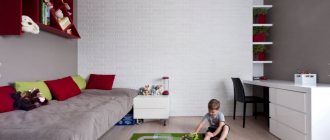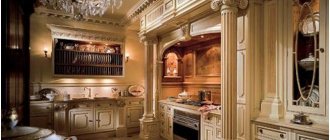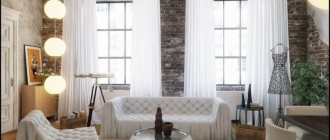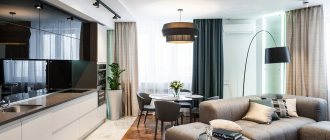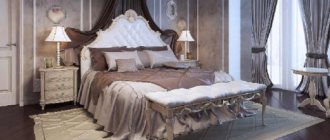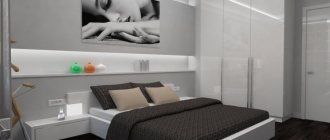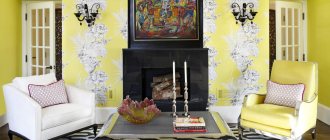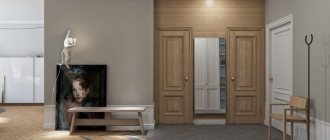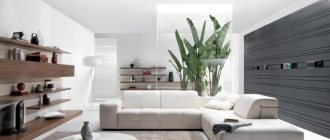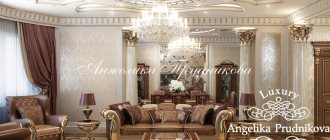History of the style
The Victorian style of housing emerged during the reign of Queen Victoria, between 1837 and 1901. During the Industrial Revolution, Britain's middle classes managed to increase their wealth and invest in the decor and design of their homes for the first time. This was made possible in large part by the inexpensive mass production of countless household items, making them available to people who could never afford them.
The middle class began to emulate the aristocracy and filled their homes with accessories, furniture, and fabrics designed to demonstrate their new social status. It was believed that empty rooms also testified to the lack of taste of their inhabitants, who sought to make up for lost time, sometimes even to the detriment of common sense and their own comfort. Victorian interiors seemed very cluttered compared to the minimalist ideas of the time.
Let's avoid repeating these mistakes and look at how you can bring the spirit of Victorian nostalgia into a modern home without costly conversions.
Photo: blog.qualitybath.com
Photo: blog.qualitybath.com
Walls and floors in a Victorian interior
Wallpaper for Victorian interiors was literally a revolutionary idea. This was caused by their mass production in the 1840s - and immediately such finishing was in demand in the homes of middle-class consumers. Wallpaper in the style of iconic 19th-century designer William Morris is ideal for emulating this Victorian fashion, featuring large animals, birds or floral prints on silk paper. Alternatively, use painted walls, which can then be complemented with Victorian-style decor.
Victorian style flooring is parquet or half-toned planks, with a large patterned rug in the middle of the room leaving the wood trim visible.
Photo: impressiveinteriordesign.com
Living rooms in the spirit of the Victorian era are stylish!
The Victorian style is quite loyal: it can be kept unchanged, or it can be customized to suit the needs of a modern person. Main trends: feminine forms, gradation of shades of the color scheme from walls to ceiling with dominance of one.
The overall atmosphere of the Victorian style home is very comfortable and welcoming. This is an emphasis on the wealth and taste of the owners of the house.
Once upon a time, the living room of the middle class was small and combined several functions. For example, the hallway, reception area and the living room itself. Therefore, even now this room is focused on the individual needs of home owners.
Let's look at an example of such an adaptation: the living room is a long narrow hallway combined with a lounge room with a fireplace. Such a transformation preserves a single space while combining several functions.
If comfort and intimacy are more important for the owners than the openness of the space, then the living room can be made very small, with an intimate feel. Pale neutral colors and a lovely large mirror help make the space appear larger.
Huge sash windows were a staple of Victorian living rooms. Therefore, you should not replace them with modern double-glazed windows. The window frame must certainly be made of hardwood.
If there are no such windows in your room, then you can drape the walls with curtains. Moreover, it is better to choose fabric in the same color palette as the walls. After all, the absence of contrasts increases space.
Many Victorian houses have three-sided bay windows. A dining table or desk would look great in this cozy space.
French windows were not a necessary part of the Victorian style, but having them provides additional bonuses. This could be access to the winter garden or terrace. In addition, such windows are an excellent source of natural light.
Large living rooms can be “equipped” with additional functional loads. By installing a piano, we will create a music salon. Having equipped the room with many bookshelves, we will turn the living room into a library.
Several huge windows in the chic living room add a feeling of fresh spring air and warm rays of sun to the atmosphere of the room.
In a small room, wallpaper with a library shelf print adds a stunning effect of depth and volume.
Decorating the living room with dark wood gives the room an additional strict chic.
Pastel pink-peach and sky blue shades go perfectly together. A gentle feeling of femininity and touching naivety.
Decorating the room with wood in combination with the blue color of the walls very favorably emphasizes the homeliness and warmth of this living room.
Color, fabric and patterns in a Victorian interior
Soft, muted tones are preferred; there is no need to bring anything bright or too catchy into the room. Delicate pink, grey, lavender or sage shades are ideal as a base, to which you can add a little warmer: mustard yellow, burgundy or a shade called teal.
Fabrics for Victorian interiors include heavy silks or velvets that are ideal for curtains, as well as prominent floral prints on thick chintz for cushions or seat covers.
Patterns can be used very actively throughout the interior: from curtains to pillows and from rugs to wallpaper. The most characteristic ones are geometric lines or stripes, animalistic and floral patterns.
Photo: blog.qualitybath.com
Photo: blog.qualitybath.com
Victorian Furniture and Home Decor
A cluttered room is common in an authentic Victorian style, so don't be afraid to use chunky soft furnishings, preferably richly decorated with carvings, fabrics and large timber pieces. Carved furniture made of mahogany, walnut or oak, chairs, ottomans and chaise lounges, mirrors in heavy frames, lamps of different sizes are ideal for copying Victorian furnishings. And be sure to use large paintings in massive frames to decorate your rooms.
To copy the real Victorian style, each wall should be decorated with framed photographs, Chinese drawings, the same paintings, and all surfaces should be complemented with flowers in vases and accessories.
Lace was a very popular material for decorating Victorian interiors - it could be seen on seat backs, tables and mantelpieces.
Stained glass is a particularly attractive Victorian feature that creates a period-specific feel in a modern home.
Using antique pieces for decoration is very popular in modern Victorian interiors. For example, antique doors and windows can be restored and very organically introduced into the architecture of your home, enhancing the feeling of immersion in a luxurious era of the distant past.
Photo: impressiveinteriordesign.com
Photo: impressiveinteriordesign.com
Walls
The walls, too, displayed the elegant luxury of Victorian decor. Carved ceiling cornices, intricately designed ceiling medallions, and decorative painting techniques were used to decorate walls during this era.
Luxury dining room interior. The ceiling is decorated with a medallion. Silk wallpaper with monograms.
The walls were painted in bright colors: blue, green, brown or gold, but lighter colors could be used in private rooms.
Contemporary dining room with Victorian elements: carved wooden furniture, dark blue walls.
During that era, wallpaper began to be mass produced, and it immediately gained popularity among consumers. Choose wallpaper with characteristic prints: complex curls, patterns of flowers and leaves.
You can cover the lower third of the wall with wooden panels, and cover the upper third with wallpaper.
Combined wall decoration. Painting and wood panels.
Fireplaces in the interior of Victorian houses
No true Victorian home would be complete without a fireplace - and one is a must-have addition to a modern Victorian living room or bedroom. Imitations of real fire are quite acceptable, but any electric fireplaces must accurately reproduce a wood-burning fireplace - this is a prerequisite for their use in the interior. Flea markets and antique stores can be the place to find an authentic fireplace from a bygone era. Adding a mantel to the room also gives it a Victorian feel and provides an ideal place to display collections of knick-knacks and mementos.
Photo: impressiveinteriordesign.com
Photo: impressiveinteriordesign.com
Photo: blog.qualitybath.com
Victorian marble finish
Marble was extremely popular in homes during the Victorian era, and this fact cannot be overlooked if you are striving to get the style right. Marble floors are the easiest way to follow this tradition, but if that's too expensive for you, use marble accents. This could be a fireplace mantle or coffee table, a small statue or vases. The aesthetic that marble brings to a home is a sign of true Victorian style.
Photo: impressiveinteriordesign.com
Bathroom
The Victorian style home has a layout that includes a bathroom en-suite to the bedroom. Usually in such rooms there is a large window, which is decorated with textiles.
The floor in such a room is tiled. Usually it is laid out in such a way as to create a contrasting, usually black and white, checkerboard pattern.
The Victorian style in the bathroom interior is emphasized by the use of an antique-shaped bathtub with high legs. It can be enamel or copper.
Victorian living room
Victorian living rooms can be as practical and functional as any other living room. It is important to arrange it correctly. You could say that the Victorian living room takes us back in time, while maintaining all the convenience of modern design advances.
A wealth of texture, color and fabric is a must for a classic Victorian living room. Take a break from the dreariness of gray and white and think of bright and regal colors like purple, dark shades of coral and blue, and vibrant yellows. Sparkling chandeliers, abundant lighting and shiny metallic accents will highlight this style.
Choose gold to decorate your living room and you can't go wrong with an authentic Victorian feel. The splendor of the Victorian era is emphasized by gold jewelry, gold-toned decor, or a coffee table or bedside table with marble and gold glitter. Add the elegance of black to gold - the classic living room will come to life and sparkle with aristocratic details. If you're not too comfortable with all that bright splendor, warm yellow shades are a great substitute.
Think about the smallest details when creating such an interior. Candles with silver sconces on the mantel, fresh flowers in a vase, rugs with oriental patterns, plush and velvet fabrics for drapery, brass floor lamps - all this will add bright and characteristic touches to the Victorian living room.
Photo: blog.qualitybath.com
Photo: impressiveinteriordesign.com
Victorian style in the interior
Nowadays interiors in the style of minimalism are fashionable, but the soul asks for something like this... For lovers of pomp and beauty, the Victorian style is luxury and wealth.
A little history
Victorian style is the conventional name for a long period in the history of art in England in the second half of the 19th century, associated with the reign of Queen Victoria (1819-1901) and Prince Consort Albert (1819-1861).
The characteristic features of the Victorian style are eclecticism, combining Gothic, Rococo, exotic and classic.
During the reign of Queen Victoria, industry developed rapidly, England acquired new colonies, so the bourgeoisie became richer. What was once a luxury became increasingly affordable. The interior of the house demonstrated the status, respectability, solidity and wealth of its inhabitant. Hence the splendor in the interior - the more richly furnished your home is, the more prestigious your position in society.
The Victorian style in the interior owes its splendor to another fact. England was a maritime power with many colonies. Businessmen had the opportunity to visit exotic countries (India, China), and, bringing souvenirs and interior items from there, they decorated their home with them. Therefore, the Victorian style is eclectic: it includes elements not only of ethnicity, but also of classics, neoclassics, gothic, rococo and other styles.
The Victorian style motto: “A sense of proportion in everything!”
The main feature inherent in the Victorian style is discreet luxury. English classics in the interior demonstrate the wealth and respectability of the resident.
Victorian style does not suit every room. It is best to decorate spacious rooms with high ceilings in this style - a small room will seem too cramped and cluttered, and the discreet beauty that distinguishes the Victorian style in the interior will disappear.
Interior design in the Victorian style is quite an expensive undertaking: natural materials, rich decor and finishing.
The main elements of the Victorian style:
- a mixture of Gothic, Baroque and Renaissance styles;
- a combination of ancient traditions and impeccable quality;
- primary colors: brown, burgundy;
- characteristic lines: straight and arcs;
- characteristic shapes: vertical elongated planes;
- characteristic elements of the interior: cluttering of the interior with trinkets;
- window shape: Gothic, arched, rectangular;
- doors: solid rectangular, with brass trim.
Materials. Furniture made from natural wood, preferably valuable wood. Windows, parquet and solid doors are also made from natural wood. The walls and ceiling can also be decorated with wood paneling. Accessories are usually made of crystal or decorated with gold.
Textile. You will need a lot of fabric, very different, but certainly high-quality and rich-looking. The fabric will be needed for curtains (certainly with folds, lambrequins and cords decorated with tassels), draperies, wall upholstery and furniture. The texture of the fabrics should be “noble” - velvet, chintz, and damask are perfect. Lace and fringe are very appropriate. For accessories, a single stylistic thread is crystal, gilding on picture frames, lamps, and furniture.
Floor. The finishing of the floor and walls is very important. Floorboards or pieced textured parquet or ceramic tiles with an original pattern are usually laid on the floor. Don't forget about solid rugs in neutral shades with calm patterns.
The walls can be covered with wood panels, painted, upholstered with fabric or covered with wallpaper. You can paint or wallpaper the walls in three levels, using different colors of paint/wallpaper. To decorate the walls, moldings, pilasters, cornices, and a frieze for stucco molding are used.
Colors and patterns. Victorian style doesn't really limit your choice of colors and patterns. Wooden furniture usually comes in different shades of brown and is decorated with gold leaf.
In a Victorian interior, it is permissible to use both calm pastel colors (for example, beige) and rich bright ones (green, red, terracotta, blue, purple). As for patterns, floral and plant motifs, geometric patterns (vertical stripes, plaid), heraldic designs, and brocade imitation are in favor. The fabric can be decorated with paisley, houndstooth, traditional English stripes, polka dots, etc.
Victorian style in the interior is for people who are not afraid to demonstrate their material wealth and excellent taste.
The main commandment of the Victorian style: the interior should be rich, but harmonious, luxurious, but restrained, beautiful, but not flashy. This is what you need to adhere to.
Victorian style bedroom
For many decades, the Victorian bedroom remained unchanged, even if modern elements were used in the decoration. And often it is modern beds combined with a vintage bedside table, antique wardrobe and elegant lighting that will help paint a picture of Victorian seasoned beauty. If a four-poster bed isn't your thing, use drapery to give your bedroom a Victorian feel. This will preserve the majestic beauty of the bedroom and show that a real princess is resting here! And remember that the bed is the most visible object in a Victorian bedroom, its showcase, its character and mood.
Victorian decor fits well into a modern backdrop in many cases. What you need can range from simple things like a chair, dressing table and mirror with Victorian charm, to a room where the furniture selection is completely Victorian.
Small details such as the bedding, pillows and fabrics you use in your bedroom can completely change the ambiance of it, and a shade of gold along with white is perfect for a modern Victorian bedroom. Wallpaper is another great way to create this classic style, and if you're not happy with the results, redecorating your bedroom won't be difficult. When choosing details of furnishings and decor, try to keep the golden mean between modest and grandiose, elegant and elaborate - this is the true Victorian style.
Photo: impressiveinteriordesign.com
Photo: impressiveinteriordesign.com
Photo: theglampad.com
Color scheme and decoration of a Victorian living room
In the Victorian era, rich tones were preferred such as:
- red;
- violet;
- burgundy;
- dark green;
- lilac.
In order to avoid the feeling of gloominess in the room, the interior of a modern living room in Victorian style uses a contrasting color scheme: with bright walls, preference should be given to furniture made in soothing colors. If the furniture is dark, then the walls should be light. The interior of the living room combines warm shades of golden, brown, brick with cool blue, gray, white, green tones.
For flooring you can use natural wood parquet, laminate, carpet, ceramic tiles. A large carpet with oriental patterns will look very organic on the floor. The carpet can be combined with a pattern on the wallpaper or upholstery.
Important! Windows in a Victorian living room should never be covered with blinds or shutters.
There should only be thick curtains made of expensive fabrics in combination with light lace tulle.
In the Victorian era, the walls were decorated with wood and fabric. Paper wallpaper was a sign of cheapness and bad taste. However, now when decorating interiors in the Victorian style, wallpaper with complex patterns and imitation bas-reliefs is widely used. Wooden panels with elegant patterns also look great in the living room.
Victorian kitchen
The kitchen was always a very important room in a Victorian house, where the owners spent a lot of time, since not all Victorian families could afford to hire servants. A traditional Victorian kitchen is always very large, with a workspace in the center of the room. If the space of your kitchen does not allow you to copy the best examples of that era, create such an interior on a smaller scale.
In addition to a central table or island, a Victorian kitchen should be filled with cabinets and appliances. But unlike kitchens decorated in other styles, here this furniture is not fixed to the walls, which means it can move freely. And even a heavy and massive sink should not necessarily be fixed to the countertop.
Victorian cuisine is rich colors, lots of decor, textiles and everything that can be called elegant and comfortable. Wasteful, but not tasteless - this is the motto of real Victorian interiors.
Photo: ofdesign.net
Photo:
Furniture
Like all other elements, Victorian furniture was large in size and richly ornamented. More often it was made of dark wood and decorated with intricate carvings. The favorite material of furniture makers was mahogany, and the most common pieces of furniture were sideboards and buffets, decorated with ivory inlays.
Victorian style wooden sideboard with carvings.
The rooms were overcrowded with furniture, sometimes to such an extent that it was difficult to move around.
The large round dining table rested on a massive pedestal or richly carved legs. Coffee tables and side tables had a tabletop made of solid marble or finished with mosaic inlays.
The backs, legs and armrests of chairs and armchairs were decorated with curlicues.
The bedroom interior could not do without a massive mahogany chest of drawers with many drawers. Linen was stored in it, but sometimes it also played the role of a dressing table, then a mirror was hung on the wall in front of it.
In the Foto. A bedroom with a chest of drawers serving as a dressing table and a mirror above it.
Upholstered furniture was chosen with upholstery in bright, rich colors. Armchairs, ottomans and ottomans were often quilted with buttons. The upholstery was made from luxurious fabrics: velvet, brocade and silk. At that time, couches with oval backs and curved legs were in fashion.
In a Victorian bedroom, the bed was either covered with an elaborate canopy or had a huge carved wooden headboard and footboard.
Four poster bed.


